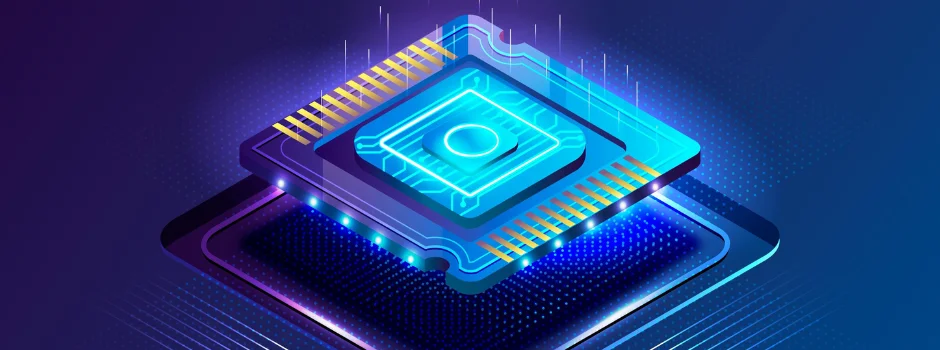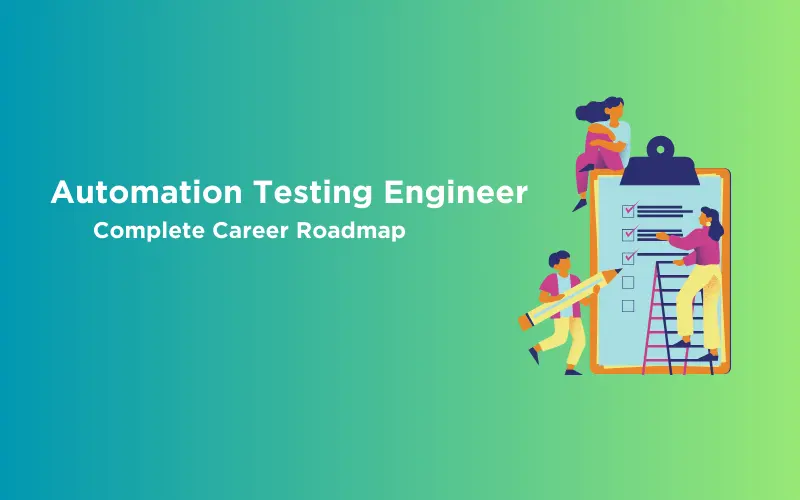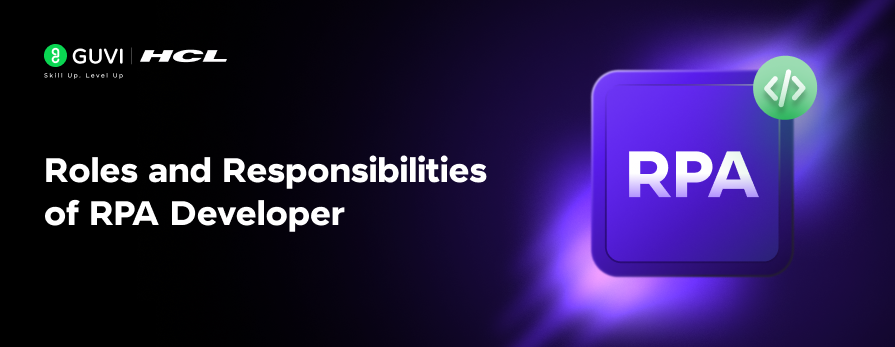
Java Developer Roles and Responsibilities: What You Need to Know
Jan 15, 2025 4 Min Read 2099 Views
(Last Updated)
Java, introduced by Sun Microsystems in 1995, quickly became a mainstay of software development due to its platform independence and flexibility. Developers and businesses use it to build everything from web applications to Android apps and cloud systems. Early applications, like Minecraft, turned around the gaming world by offering an open-world sandbox experience where players could build, explore, and create limitless environments. And today, Java powers Spotify’s backend, supporting millions of users with its near-perfect music streaming. This enduring relevance has ensured that the demand for Java Developers remains perpetually high.
However, with advancing technologies, particularly the rise of DevOps, Docker, and Kubernetes, and the changing needs of modern enterprises, Java Developers are now expected to go beyond writing code. They have to be an expert with these tools, ensuring the reliability and scalability of the applications they build. Let’s look at the top Java developer roles and responsibilities.
Table of contents
- Top Java developer roles and responsibilities
- 1) Designing and developing Java applications
- 2) Managing Java and Java EE application development
- 3) Collaborating with teams and stakeholders
- 4) Implementing Continuous Integration and Deployment (CI/CD)
- 5) Security and performance optimization
- Java developer roadmap: What's changing in the next 5 years?
- Final Thoughts
- Frequently Asked Questions
- What tools are essential for a Java developer?
- How does Java support microservices architecture?
- Is Java still relevant for Android development?
- How does serverless computing impact Java development?
- What is the average learning curve for new Java developers?
Top Java developer roles and responsibilities
In the late 1990s, Java developers primarily worked on building desktop applications. For example, the early versions of Eclipse and NetBeans IDEs, along with several other such apps, focused on simpler, stand-alone software. Fast forward to today, Java developers are no longer confined to desktop environments. They are now responsible for managing elaborate, high-volume systems like those we see through Amazon Web Services (AWS) and Netflix’s back-end infrastructure. Now, they handle the entire software development lifecycle (SDLC), from the design to the deployment, all while assuring the systems they create ultimately satisfy the demands of increasingly complex infrastructures.
In the near- future, Java developer roles and responsibilities will expand to DevOps for seamless integration, Docker for containerization, and Kubernetes for cloud management. Mastering these DevOps tools will be key to staying competitive.

Let’s dive into detail to understand what all will count for a Java developer job profile:
1) Designing and developing Java applications
Designing and developing scalable, reliable, and high-performing Java applications remains the fundamental responsibility of Java Developers. They have to work through every stage of the development process, from conceptualization to deployment, to ensure what they build can handle the growing demands of users and businesses without sacrificing stability.
Java developers also have to write efficient, testable codes. Efficiency here counts for codes that are easy to maintain and update. Whether it is a junior Java developer working on simpler components or a mid-level or senior developer managing complex, large-scale applications, the focus is ensuring that the performance and scalability are never compromised as the application grows.
The average salary of a junior Java developer in India deployed for creating Java applications ranges from INR 4,00,000 to INR 6,00,000 per annum, whereas for mid-level/senior developers, it is INR 7,00,000 to INR 9,00,000 per annum.
Also read | Getting Started With Java: Essential Concepts and Techniques
2) Managing Java and Java EE application development
Next up is Java EE (Enterprise Edition) application development. It is vital for enterprise-level systems that process large amounts of data and high traffic while ensuring low latency and security. Java Developers need to have a robust understanding of system architecture and integration to build scalable and resilient solutions.
This responsibility primarily falls to senior Java developers and lead Java developers, who oversee the development and management of these complex systems. They ensure that applications perform efficiently under high demand, satisfy business goals, and remain adaptable as the company grows. Managing enterprise applications also means addressing security challenges while maintaining performance and scalability.
The average salary of senior Java developers deployed in creating enterprise editions ranges from INR 8,00,000 to INR 10,00,000 per annum, whereas for lead developers, it is INR 10,00,000 to INR 12,00,000 per annum.
3) Collaborating with teams and stakeholders
Collaboration is one of the core Java developer roles and responsibilities. The developers have to work closely with product managers, UX/UI designers, and engineers to ensure the technical solutions align with the company’s business goals. Only through regular communication with the stakeholders can the developers meet this goal, ensuring the smooth execution of the development process.
For mid-level Java developers, the focus lies on collaborating within teams, ensuring alignment on project goals and development timelines. Whereas, for senior and lead Java developers, managing cross-functional teams and presenting technical solutions during architectural reviews is one of the broader responsibilities.
4) Implementing Continuous Integration and Deployment (CI/CD)
Java Developers are responsible for implementing CI/CD pipelines, which automate the testing and deployment processes. It helps reduce downtime and seamlessly integrates new features and bug fixes. Through CI/CD pipelines, java developers can also maintain the system’s stability without disrupting workflows.
Usually, this responsibility falls upon mid-level or senior developers with the right experience to set up automated testing environments and streamline deployment. These developers work closely with DevOps teams to ensure that CI/CD practices are deeply integrated into the
development lifecycle, enabling smooth and efficient code delivery.
The average salary of mid-level Java developers in India deployed in CI/CD implementation ranges from INR 5,50,000 to INR 8,00,000 per annum, whereas for senior developers, it is INR 9,00,000 to INR 11,00,000 per annum.
5) Security and performance optimization
The growing number of data breaches and cyber threats make security and performance optimization quite pressing for Java developers. The developers need to constantly monitor applications for potential security vulnerabilities, conduct regular code reviews, and implement industry-standard best practices to protect against breaches.
Besides safeguarding the system, developers are also tasked with performance optimization, ensuring Java applications run smoothly under varying conditions. This responsibility generally falls to mid-level and senior Java developers with enough technical expertise to conduct in-depth security audits and performance tuning.
The Senior Java developers make sure their applications meet strict security standards and can handle heavy workloads without compromising speed or reliability. The average salary of mid-level Java developers in India deployed in security and performance enhancement ranges from INR 6,00,000 to INR 8,00,000 per annum, whereas senior developers get INR 9,00,000 to INR 12,00,000 per annum.
Java developer roadmap: What’s changing in the next 5 years?

Java developer roles and responsibilities are sure to undergo significant changes over the next five years, largely driven by emerging technologies. According to a 2023 Gartner report, 85% of organizations will embrace cloud-native technologies and microservices architecture by 2025. This might push Java Developers to look for new tools and methodologies to remain competitive.
Technologies like artificial intelligence (AI) and automation are also set to have a larger impact, with AI-driven tools assisting in areas like code generation, debugging, and performance optimization.
Beyond technical shifts, there will be a growing emphasis on cross-functional skills. Java Developers will be expected to collaborate more closely with DevOps, data engineering, and cybersecurity teams to build resilient, scalable systems, such as Netflix or Amazon Web Services (AWS). In order to handle large amounts of traffic, such integration will be paramount.
The skill set of Java developers will also expand to include machine learning, advanced cloud architecture, and data security. As AI and machine learning continue to mold the industry, Java Developers will need to integrate these technologies into their applications, driving innovation across sectors such as finance, healthcare, and eCommerce.
Know More About | How to Become a Java Developer: A Detailed Roadmap
Final Thoughts
As we look ahead, the role of a Java Developer is poised for substantial evolution. From the integration of AI and automation to the growing importance of cloud-native and microservices architectures, Java developers will need to adapt to keep pace with these technological shifts.
As a Java developer, the ideal way to remain competitive is by expanding your skill set and consistently upskilling yourself with industry trends. GUVI offers a Certified Java Full Stack Developer Course that’ll help you strengthen your front-end and back-end fundamentals, as well as build a foundation in database management. You can consider enrolling in our course to experience some top-notch learning with hands-on skills, as well as comprehensive placement guidance. Get ready to master what the future holds for JAVA!
Frequently Asked Questions
Aside from Java itself, tools like Docker (for containerization), Kubernetes (for cloud management), and CI/CD tools like Jenkins are important to get hold of for ensuring scalability, automation, and seamless development workflows.
Java, with frameworks like Spring Boot and Micronaut, supports the development of microservices by enabling lightweight, modular applications that can be independently developed, deployed, and maintained.
While Kotlin has become increasingly popular, Java still remains highly relevant for Android development, particularly for legacy systems and certain libraries still built in Java.
Serverless computing allows Java developers to deploy applications without managing the underlying infrastructure, which enhances scalability and reduces costs but may require a deeper understanding of cloud functions and event-driven architectures.
Learning Java can take several months for beginners, but mastering advanced topics like multithreading, memory management, and enterprise solutions may take 1-2 years, depending on your prior programming experience.






















![Top 10 Mistakes to Avoid in Your Data Science Career [2025] 5 data science](https://www.guvi.in/blog/wp-content/uploads/2023/05/Beginner-mistakes-in-data-science-career.webp)



![Top React Interview Questions and Answers! [Updated] 9 React Interview Questions](https://www.guvi.in/blog/wp-content/uploads/2022/01/Top-React-Interview-Questions-and-Answers.webp)




Did you enjoy this article?